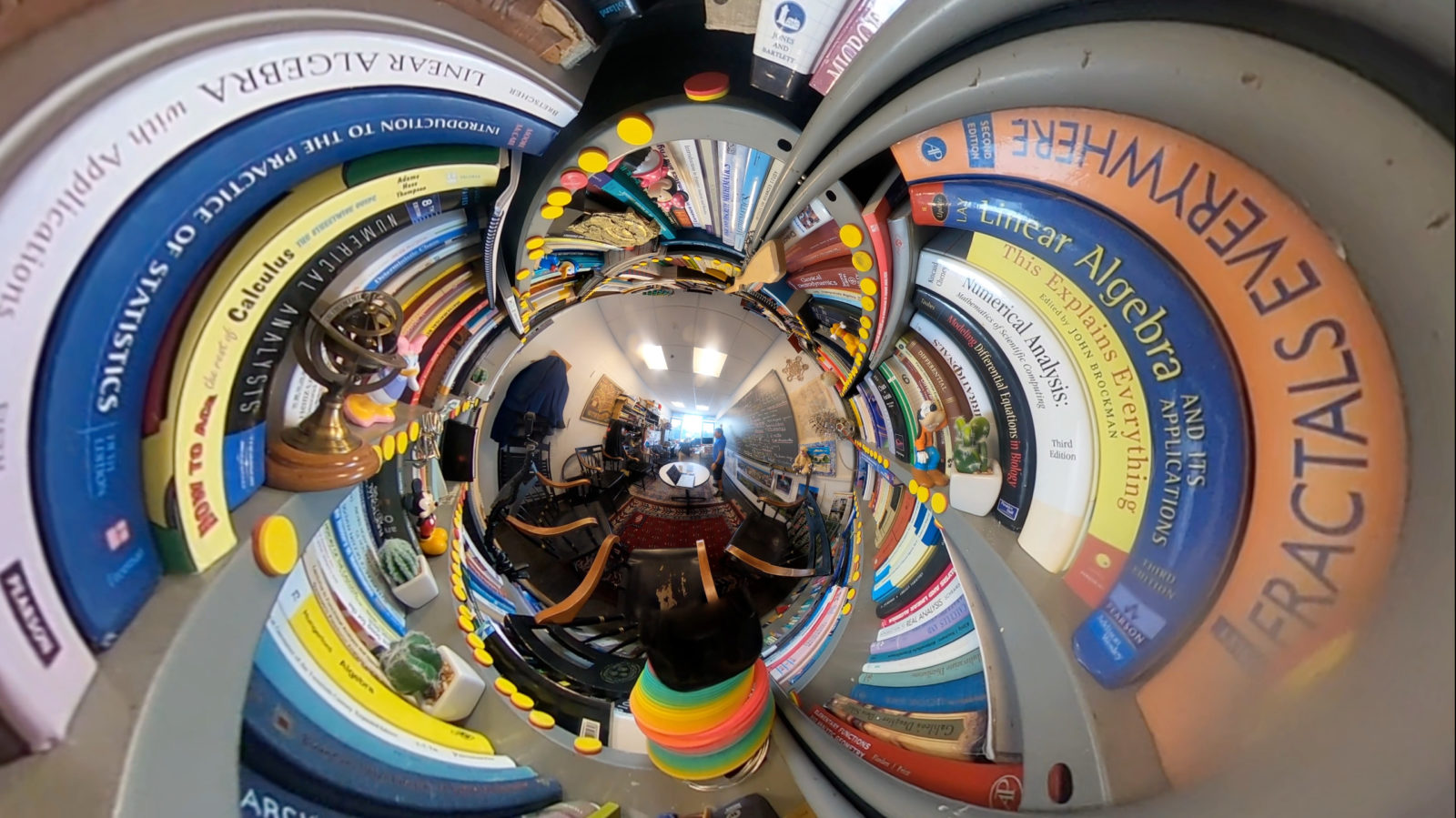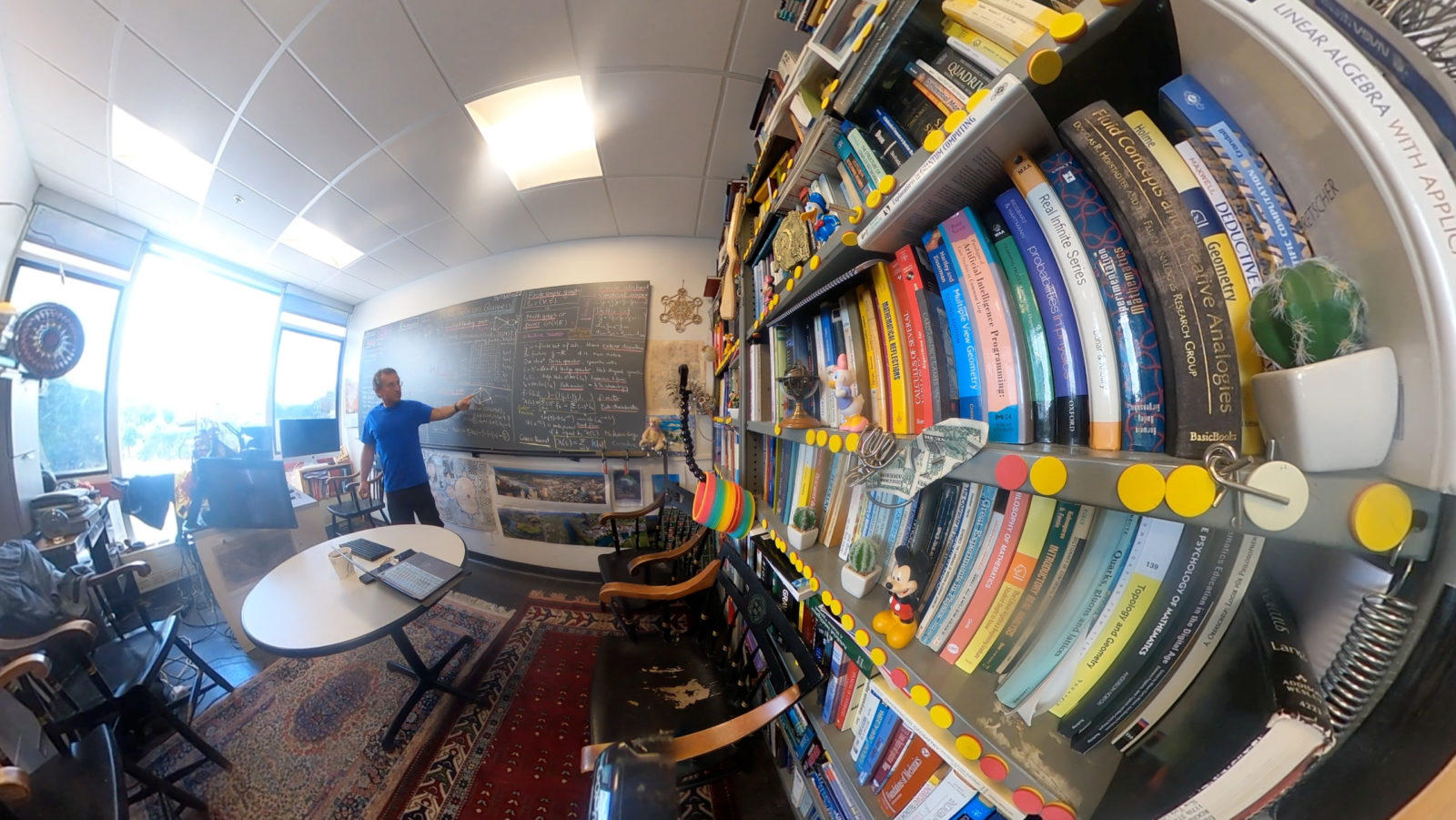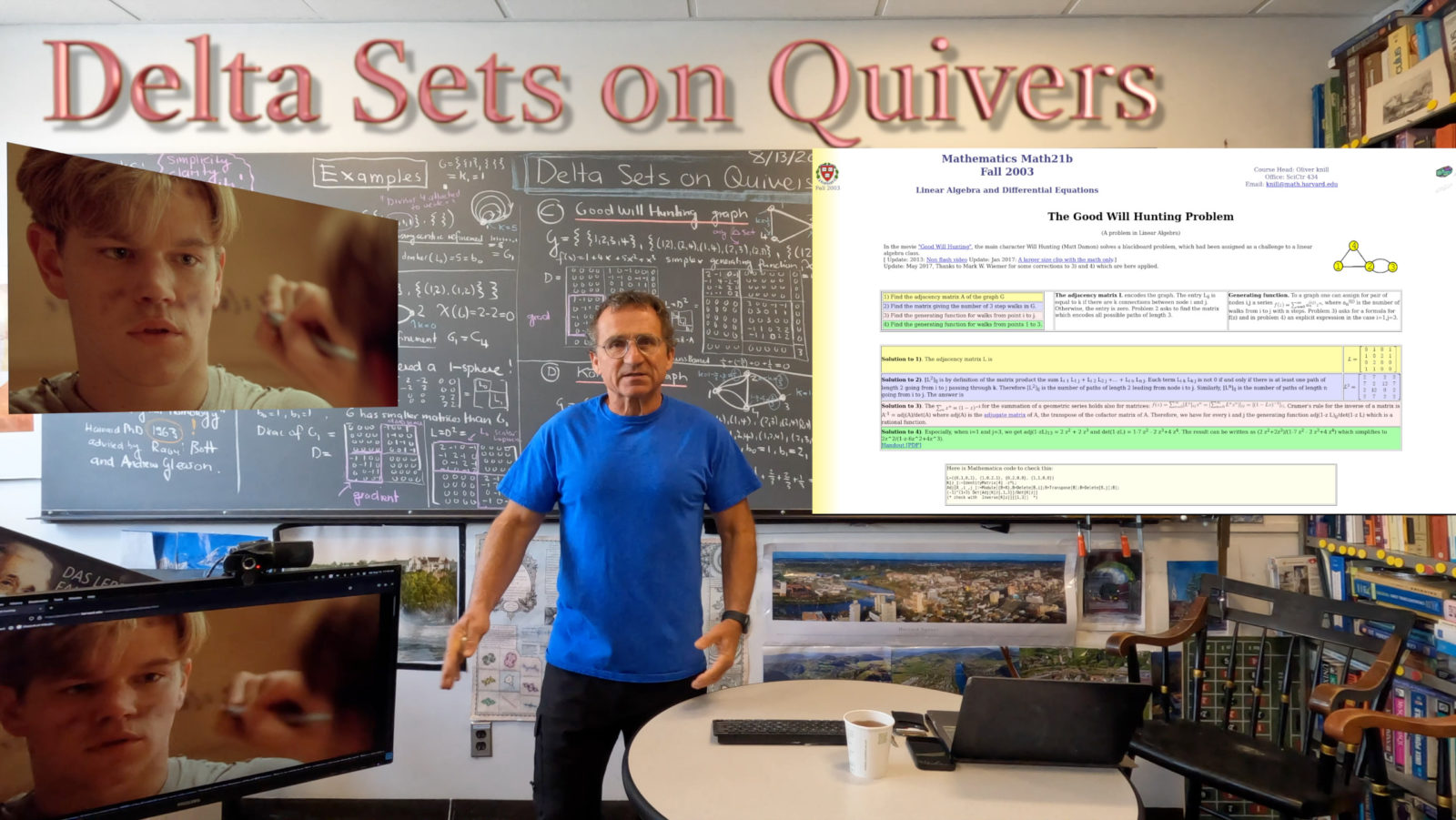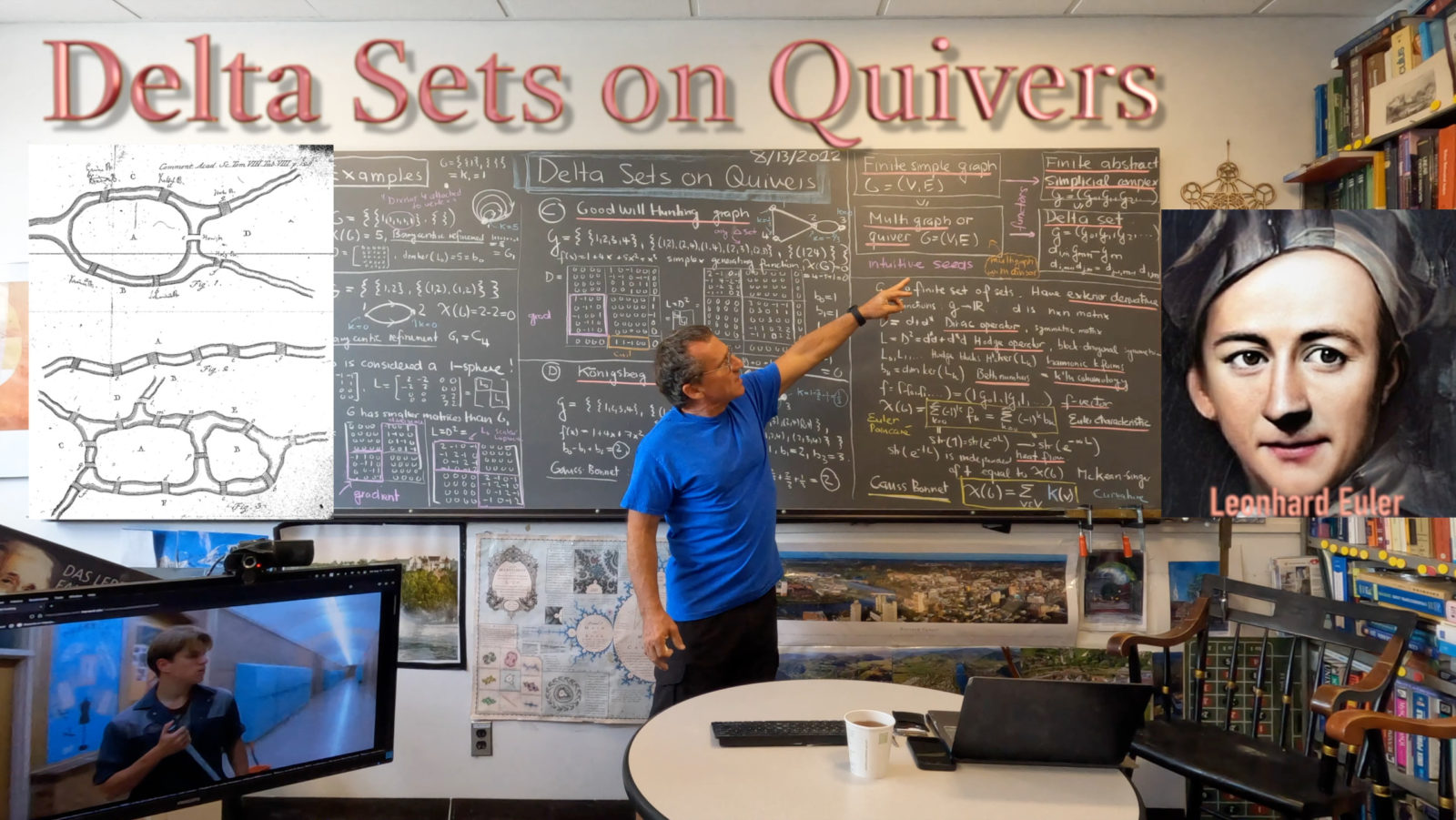A new video recorded on August 13, 2022. We look at how Delta sets can be used to define a natural Euler characteristic for quivers. Delta sets have been introduced in 1950 by Samuel Eilenberg and Joseph Zilber. Delta sets are for me much more intuitive than simplicial sets. Look up the definitions and the articles written about them and decide yourself what makes more intuitive sense: simplicial sets or Delta sets. Both are well known in category theory and darlings there because they form a nice category: as presheaves they are topoi like the category of sets. I myself tried for years to get an intuitive grip on simplicial sets and despite articles like this of Greg Friedman [PDF] or this by Emily Riehl [PDF] I prefer Delta sets, the reason being that they are simpler (there are no codegeneracy maps as introduced in delta sets), only boundary maps (=coface maps). But boundary maps are all we need to define a Dirac operator
given by an exterior derivative and so cohomology as the kernels of the blocks of the Hodge Laplacian
. Having a delta set allows to have an Euler characteristic (we talked about this last week). Euler characteristic should satisfy important theorems like Gauss-Bonnet, Poincare-Hopf, Riemann-Hurwitz, Euler-Poincare etc. and have properties which make it a worthy candidate for counting: especially, it needs to be compatible with multiplication (I might talk about this next week) and homotopy and Barycentric refinements etc. Also during last week, it dawned to me how to make sense of homotopy for quivers. Again, the simplest definition is the best. [ Since having learned UNIX as a junior in college, I have been a prophet of the “simplicity-generality-clarity” paradigm, which also can be seen as an aspect of Occam’s razor paradigm. If in doubt on how to proceed, always chose the simplest version of all the alternatives that present themselves. ] What is the simplest definition of homotopy for quivers? Two quivers can be considered homotop if their Barycentric refinements are homotopic. Now, the Barycentric refinement (the elements in the delta set are the vertices and two are connected if there is a chain of delta maps which connects them) is a finite simple graph (the complex of course coming from a finite simple graph), where homotopy is very intuitive and powerful, despite its simplicity (just add or remove vertices for which the unit sphere is contractible). An other conundrum is now easily resolved: when is a quiver a sphere? The answer is also mind-bogglingly simple if one gets it: a quiver is a sphere, if its Barycentric refinement is a sphere. We have talked about spheres a lot, especially in the context of discrete manifolds. They are obtained if one combines the concepts of dimension and homotopy: a d-sphere should have all unit spheres (d-1) spheres and have the property that removing one vertex renders the graph contractible. These definitions (like graphs, multigraphs, simplicial complexes, delta sets, homotopy or manifold) are so simple that there is no danger at all that they need to be simplified any further. You can not simplify more what is already dead simple. Just to provoke a bit: I love the mathematics of the early half of the 20th century very much and the math before even more. Mathematicians often have lost the battle, especially when it comes to abstraction. That comes with a revenge. More and more mathematics has been taken over by computer science or applied mathematics or statistics. (An allegory to this is that these other branches of mathematics have taken over and even are not ashamed to snatch away iconic items in the history of mathematics for themselves. See my youtube video on the move of the Mark I. By the way, I have on the video below flown over the the SEC complex in Allston, where the Mark I is now located) . I myself feel still like a pure mathematician and I’m proud of it. There is some beauty and poetry in pure mathematics, even if one does very applied things. Especially if one looks at what happens in the long term. Solid pure mathematical structures will prevail and remain eternal while particular models or computer implementations will be deform and adapt and change. I mentioned Euler who solved the Koenigsberg bridge problem using a new mathematical structure called “graph”. Of course, the way we think about graphs has changed since a lot and it will more in the future but any mathematical theorem about graphs like the Euler handshake formula (which a bit upgraded becomes Gauss Bonnet theorem talked about in the video) remain valid for all eternity.























